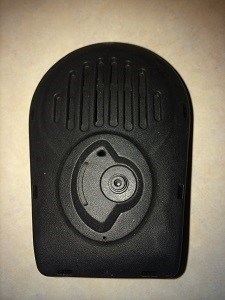Outlined below are “7 Easy Steps” that will guide you in the successful development of a product using the injection molding process.

1. Product Concept
This is your idea of a product that you think has a good chance of selling. This could range from just an idea in your head, a sketch on a piece of paper or a working prototype.
2. 3-D Solid Model, Polymer Type and Color, SLA Prototype
Having a 3-D solid model made allows you and whoever else is involved with the product the option of visualizing how all of the parts fit and also the cosmetic look of your product. Choosing the polymer type is something that an injection molding shop can be a big help in selecting. You will need expertise to rely upon especially in knowing what important properties that you require for your product’s particular function. Most of the polymers out on the market can be colored to virtually any color you choose. A SLA part or a 3-D printed part can be made so you can physically see and feel your product.
3. Mold Design
Having the mold designed is a critical step. Sometimes this includes having some changes made to the original part design to make injection molding the part(s) easier and also keeping the price down. Usually the injection mold maker and/or the injection molder will be involved with the mold design.
4. Mold Build
Once the mold design is complete, it can be sent to a number of mold making shops to obtain quotes for building the injection mold(s). By having each shop quote from the same mold design, it assures you that everyone is quoting the same type of mold(s). The building of the mold(s) is the most expensive part of producing your product. Time should be taken in choosing an injection mold making shop to make sure you choose a reputable one.
5. Sample Mold(s)/Test Part(s)
After the injection mold is finished, it needs to be sampled by an injection molding shop. Some shops do both the mold building as well as the injection molding. This is an advantage as far as the time involved in shipping the injection mold back and forth for changes that may be needed. Toth Mold/Die Inc. offers both of these services. The sampled parts must be checked and tested for the product function.
6. Production Run
Once the product is inspected, tested and approval is given, it is now ready to go into production. At this stage of the product development, your injection mold can be run at any injection molding shop you choose for reasons such as part quality and or delivery time issues. For example, if you find that the original shop you have been working with is not meeting your expectations, you can move your production to another shop.
7. Finished Product
Once all of the above steps are completed, the final step includes any required assembly, decorating and packaging. Of course, marketing is key to how successful your product will become.
Contact Toth Mold/Die, Inc. today for assistance with the “7 Easy Steps” in developing and producing your new product.

Greetings…
Let me discuss with an example. Consider that a 2-plate single cavity cold runner mold is built. For trial it is loaded in a Injection molding machine of 200tonnage and machine setting parameters are arrived. But during production, when another machine with same tonnage is used, there is a need to change the parameters and also it requires some machinings in mold. Can You explain why this is happening?
Hello,
I would need more info. If the mold was sampled in a different machine by someone else then the parameters they gave you would only be a starting point. You would need to adjust because the machines are different. I have 2 of the same machines that were built at the same time and they are totally different. As far as having to change the mold, it should not have changed from the first sampling. I would need more info on what the problem is. Let me know and I will give you my opinion.
Thanks, Tim